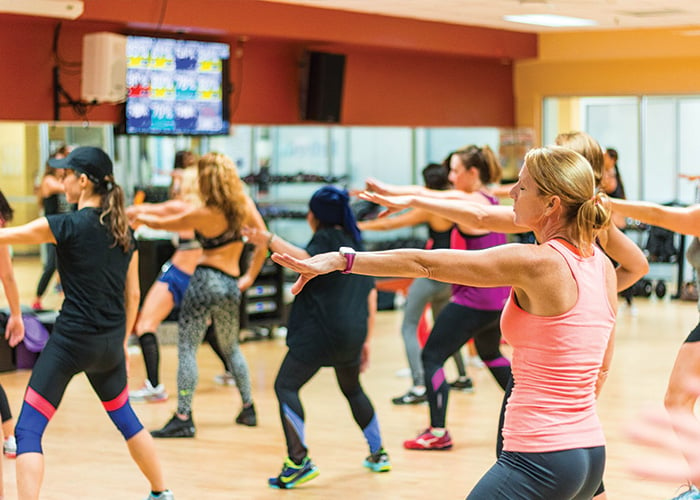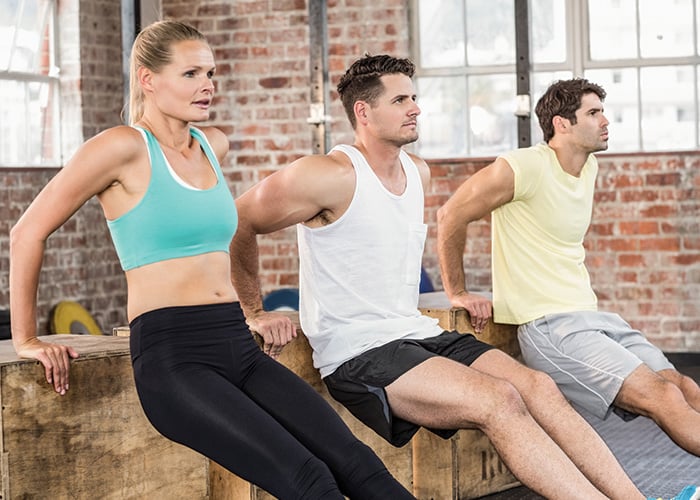Factors Affecting Heart Rate
As trainers, we know that the heart is an amazing piece of machinery. One muscle working constantly to allow our bodies to function?! Impressive.
The heart is a complex organ that operates uniquely within each of our clients. When we use heart rate training, it is important for us to understand the various factors that influence heart rate – both from a safety and programming perspective.
In this post, we’ll briefly cover several of these factors. While this is not an exhaustive list, we hope you can utilize this knowledge when programming for your clients and when answering their questions (which they will inevitably ask) about their heart rate. The MYZONE heart rate training wearable is a great tool for both you and your client to use in monitoring their heart rate over time and looking for variations to normal patterns.

Fitness Level:
Remember that cardiac output (the volume of blood pumped by the heart each minute) is the product of stroke volume (the volume of blood pumped per beat) and heart rate (the amount of times the heart beats per minute)? Individuals of a higher aerobic fitness level tend to rely more on stroke volume to increase cardiac output. As such, they tend to have a lower heart rate compared to untrained individuals at any work rate. Explain to your clients that as their cardiorespiratory system becomes more conditioned, their resting heart rate and submaximal heart rate at any work rate will most likely decrease. This means their heart has to do less work and is more efficient! It also means that as your clients become more fit, they may have to work harder and increase their workload to get their heart rate up into the yellow and red zones.

Biological Variability:
Even among healthy, well-conditioned individuals, heart rate naturally varies day-to-day during rest, submaximal exercise, and maximal exercise. In one study, exercisers performed exercise on a cycle ergometer at 10 different intensities. The test-retest reliability yielded a strong – but imperfect – correlation. This means our heart rate on Monday might be different from our heart rate on Tuesday, even if we’re doing the exact same workout. If your clients are concerned that their heart rate is slightly different between workouts, you can confirm that some variation between workouts is expected and normal.

Acute Fatigue & Cardiovascular Drift:
Have you ever seen your heart rate slowly increase during a longer workout – especially in a warm environment – even if you didn’t change the exercise intensity? This may have been due to the phenomenon of cardiovascular drift, which is characterized by a small, progressive increase in core temperature, reduction in stroke volume, and increase in heart rate after more than about 10-15 minutes of exercise. Research suggests that cardiovascular drift may be associated with dehydration, so make sure that your clients are staying hydrated during their workouts. If you notice that your client’s heart rate is increasing during prolonged exercise, check in with them about their rate of perceived exertion (RPE) and monitor for other signs or symptoms that suggest they should discontinue exercise (i.e. lightheadedness).

Emotional State:
Yep, having a stressful day can influence heart rate. Previous research indicates that feelings of nervousness or anxiety can elicit a heart rate response similar to that of moderate-intensity exercise!
If your client has had a stressful day at work, have them perform some breathing exercises before they jump into their workout, or have them spend some extra time warming up in the blue or green zones.

Music:
Music is an environmental factor that may increase or decrease heart rate, depending on the music itself! While calming music might result in a slower heart rate, upbeat music that gets us pumped up can have the opposite effect. When selecting music to play during workouts with your clients or in group fitness classes, match the music to the heart rate zone you are trying to elicit (more mellow for blue and green and more upbeat for yellow and red).

Chronic Fatigue/Overtraining:
Changes in our heart rate may be a signal that our bodies are in a state of chronic fatigue or overtraining. Some signs include an elevated resting heart rate, difficulty elevating our heart rate into higher-intensity zones, a slower recovery heart rate, and lower peak heart rate. If your clients exhibit these signs, it might be time for a low-intensity recovery workout or rest.

Sex:
Women tend to have a smaller cardiovascular system than men, resulting in lower stroke volume. This means they must rely more heavily on heart rate to get blood pumping to their muscles, and they tend to have a higher heart rate than their male counterparts.

Environment:
Is it getting hot in here? Heart rate tends to increase during exercise as the ambient temperature goes up. We also have higher heart rates during exercise as we move to higher altitudes.

Site of Muscular Activity:
Research has found that arm exercise, such as kranking on an upper body ergometer, increases heart rate more than leg exercise at any submaximal power output. Test this out with your clients. Have them perform 5 to 10 minutes of cardio on an upper body piece of equipment and a lower body piece of equipment at a consistent work rate (for example, use watts displayed on computerized equipment) and see which one produces a higher heart rate.

Body Position:
Heart rate can be expected to decrease when moving from standing to sitting to lying down.
Understanding how heart rate varies can be very valuable for programming and teaching our clients. If you notice any variations in your clients’ heart rates as they train with their MYZONE heart rate training wearable, use the aforementioned factors as reference. And, as always, refer your clients to their physician if the variations in their heart rate cause concern for either you or them.
Follow us on our Fitness Friday Periscope Broadcast for more tips on how to use MYZONE when training your clients. We would love to follow the progress of your clients with you! Please post (and have your clients post) to Facebook, Twitter, and Instagram using the hashtags #myzone, #myzonemoves, and #effortrewarded.
Keep Moving Forward!
Share this
You May Also Like
These Related Stories

Components of Fitness: Trainer

(EPOC) Excess Post-Exercise Oxygen Consumption Explained


